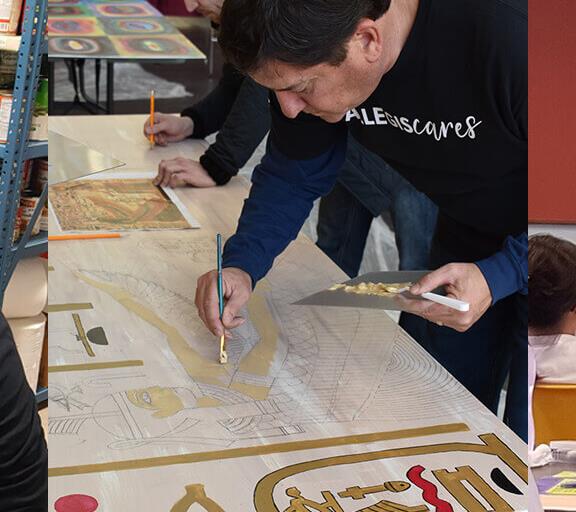Onboarding: Open the Door to a Great Employee Relationship

(The following is an excerpt from our research report, “Stepping Up: Workforce Practices That Raise the Bar on Business Performance,” which is available for free download.)
The onboarding process plays a large role in shaping the employer-employee connection. The experience and commitment of the new hire can be a positive reflection of the employer’s attention to detail on day one, leading to an engaged and productive relationship. Onboarding, however, frequently turns up as a weak link in the equation as employers often continue to look at the process as an afterthought. Preparation for day one, support of peers and the organization, and clarity of expectations all play a key role in an effective onboarding process.
Be Ready for the Employee’s First Day
Preparing for the employee’s day one should be a priority for any employer, but companies still struggle in this area. Only 38 percent of employers say they are always prepared for the new hire’s first day. This preparation includes basics such as a computer, email account, and phone setup. It also includes a facilities tour, introductions to coworkers, and a number of related first-day needs.
As survey results show, onboarding quality differs greatly between high-performing organizations and others. In fact, high-performing talent acquisition organizations are more than twice as likely as others (77 percent versus 35 percent) to say they are always prepared for a new hire’s first day. Highly engaged workers are more than twice as likely as others (38 percent versus 14 percent) to strongly agree that their current or most recent employer was prepared for their first day.
To enable an onboarding process that forges a productive employee relationship, employers can focus on coordinating resources to deliver needed tools and basic information to the employee upon joining the company. Establish a process that includes multiple stakeholders, document the steps involved, and give ownership of the effort to a manager who is expected to deliver consistent and measured outcomes. Support that process with digital solutions. Today, technology is available that automates the workflow and communications that must occur between multiple participants in the process, from the new employee to HR, technical resources, and management. This approach, utilizing technology and established processes, replaces ad-hoc onboarding that has often led to new employees sitting at desks without phones, computers, or basic resources.
Provide the Support to Kick Off a Confident Relationship
Beyond providing a consistent day-one onboarding experience regarding technology and resources, high-performing talent organizations also focus on providing human support. Even when all the resources are in place and needed information is at hand, starting a new job is still an intimidating experience for any professional. Employers have ample opportunity to help new hires fit in, but only a minority of organizations have an established process for enabling new-hire support. Of employers surveyed, only 36 percent say they always engage new hires in a community of peers and helpers in the onboarding process. High-performing talent acquisition organizations are more than twice as likely as others (72 percent versus 33 percent) to always do so, and highly engaged workers are more than three times as likely as others (34 percent versus 10 percent) to strongly agree their current or most recent employer introduced them to a community of their peers.
Time spent with managers is also essential in the first week, but only 37 percent of organizations always ensure managers meet with new hires at the appropriate frequency, with high-performing organizations being twice as likely as others to do so (81 percent versus 34 percent). Highly engaged workers are more than three times as likely as others (35 percent versus 11 percent) to strongly agree their current or most recent employer ensured the hiring manager met with them at the appropriate frequency. Employers prefer that their managers spend an average of 12 hours per week, yet they estimate their managers spend just 10 hours per week with new hires.
A sense of support and community helps employers bringing new hires into a state of productivity quickly. To facilitate the process, employers can take several measures. Introduce the new hire to coworkers early, including immediate team members and those outside their department with whom they may work. As a balance to the potential stress of multiple introductions, consider assigning a mentor to the new employee. This single point of reference can help answer questions about the company, the people, and their roles in the organization. Ensure management is involved. Early introductions from management and leadership send the message that the new employee is valued and can help foster engagement early in their tenure.
Establish and Document Expectations
For a new employee, clear performance expectations can make the difference between feeling lost in the new role and being in control and productive. For employers, the challenge in setting expectations is to ensure that they are clear, detailed, realistic, and actionable. In many cases, employers miss the opportunity to document the goals that can help start the employee’s tenure on a positive note.
Most organizations still fall short when it comes to establishing performance objectives, with only 35 percent of total surveyed employers saying their organizations always set clear expectations in the onboarding process. High-performance talent organizations are more than twice as likely to do so (75 percent versus 32 percent), and highly engaged workers are more than three times as likely (35 percent versus 10 percent) to strongly agree that their current or most recent employer established performance goals.
Several considerations go into setting performance targets. First, document near- and longer-term needs through a 30-, 60-, 90-day plan. When that plan is connected to the job definition at the beginning of the recruiting process, the documentation of objectives at the onboarding stage is consistent with initial expectations. Include all facets of the job, such as basic tasks and activities, project objectives, and professional development expectations. Work with the new employee to ensure the goals are understood. Finally, along with setting expectations, the planning process can be a good time to start the new employee on an immediate, short-term project. This approach can help establish early wins for the employee, provide a basis for interaction with others, accelerate time to productivity, and boost overall engagement.
Click here to get the full report of “Stepping Up: Workforce Practices That Raise the Bar on Business Performance.”


